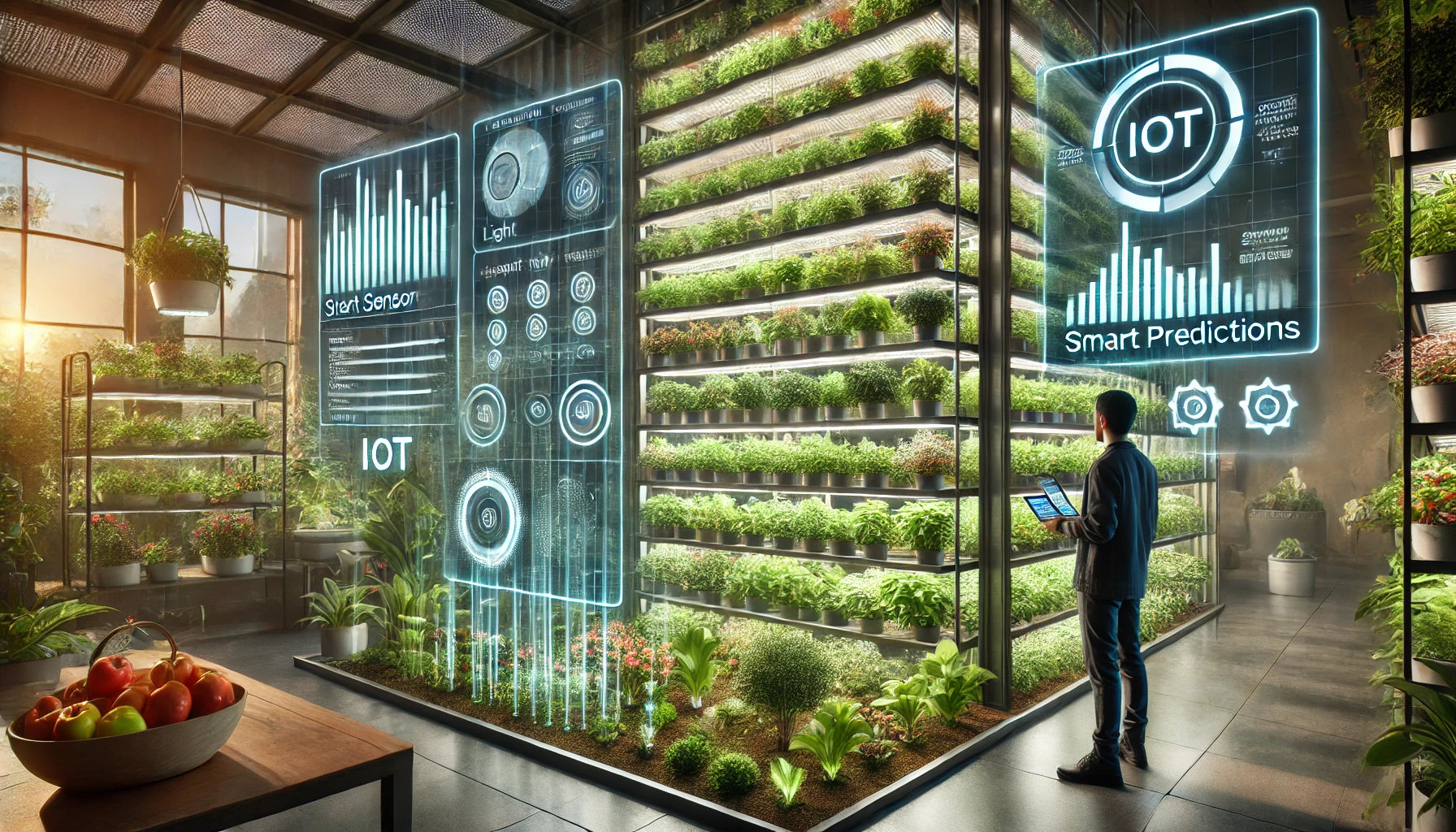IoT-Powered Indoor Farming: The Smart Home Revolution for Urban Agriculture

Introduction: Growing Green in the Digital Age
Welcome to the future of farming, where your kitchen countertop doubles as a high-tech greenhouse. IoT-powered indoor farming is not just a trend; it's a revolution transforming urban agriculture. Imagine a self-sustaining garden managed by your smart devices, ensuring fresh, home-grown produce year-round. This article delves into how IoT is revolutionizing indoor farming, spotlighting innovative startups committed to sustainable, home-grown food solutions.
The Nuts and Bolts of IoT in Indoor Farming
At its core, IoT (Internet of Things) in indoor farming involves a network of interconnected devices communicating to optimize plant growth. Sensors monitor environmental factors like light, humidity, and soil moisture, while actuators adjust these parameters automatically. Think of it as a symphony conductor ensuring every instrument plays in harmony, except here, the instruments are LEDs, sprinklers, and fans. According to a 2023 report by MarketsandMarkets, the IoT in agriculture market is projected to reach $30 billion by 2025, underscoring its rapid adoption and potential.
Smart Sensors: The Plant's Best Friend
Smart sensors are the unsung heroes of IoT indoor farming. These devices collect real-time data on various factors critical to plant health. For instance, light sensors adjust LED grow lights to mimic natural sunlight cycles, while humidity sensors ensure the air remains at optimal moisture levels. A study published in the Journal of Agricultural Science found that IoT-integrated farms can increase crop yields by up to 20% compared to traditional methods. Plus, who wouldn’t want their plants to get a personalized spa treatment?
Automation and AI: Farming with a Brain
Automation takes indoor farming a step further by using AI algorithms to analyze sensor data and make informed decisions. These intelligent systems can predict plant growth patterns, detect diseases early, and even suggest optimal harvesting times. Imagine having a digital farmer that never sleeps, constantly monitoring your garden's well-being. Startups like AeroFarms are leveraging AI to fine-tune their vertical farming operations, resulting in more efficient resource usage and healthier crops (AeroFarms, 2023).
Blockchain for Transparency and Traceability
Blockchain technology adds a layer of transparency and traceability to indoor farming. By recording every stage of the plant's lifecycle on a decentralized ledger, consumers can verify the origins and cultivation practices of their food. This not only builds trust but also ensures compliance with sustainability standards. A 2023 study by Deloitte highlights that blockchain can reduce food fraud by up to 50%, making your home-grown herbs as trustworthy as grandma’s secret recipe.
Case Study: GreenThumb Innovations
GreenThumb Innovations, a burgeoning startup, exemplifies the integration of IoT in indoor farming. Their flagship product, the SmartGarden 360, combines sensors, AI-driven automation, and blockchain for a seamless home farming experience. Users can control their gardens via a smartphone app, receiving real-time updates and personalized care tips. Since its launch in 2023, GreenThumb has grown its user base by 150%, proving that tech-savvy urbanites are hungry for sustainable living solutions (GreenThumb Innovations, 2024).
Sustainability: Growing Green Without the Footprint
IoT-powered indoor farming offers a sustainable alternative to traditional agriculture. By optimizing resource usage, these systems reduce water consumption by up to 90% and eliminate the need for pesticides. Additionally, vertical farming maximizes space efficiency, making it ideal for urban environments. According to the Food and Agriculture Organization (FAO), vertical farming could potentially produce up to 100 times more crops per square meter than conventional farming methods, all while minimizing environmental impact.
The Challenges: Navigating the Digital Garden
Despite its promise, IoT indoor farming faces several challenges. High initial costs, technological complexity, and data privacy concerns are significant hurdles. Ensuring reliable internet connectivity and cybersecurity is paramount to protect sensitive agricultural data. Moreover, the integration of diverse technologies requires expertise, which can be a barrier for the average consumer. However, as technology advances and costs decrease, these obstacles are gradually being overcome, paving the way for widespread adoption.
Future Trends: What’s Next for Smart Indoor Farming?
The future of IoT-powered indoor farming is bright, with several emerging trends set to shape the landscape. Integration with smart home ecosystems, such as voice-controlled devices and augmented reality interfaces, will enhance user experience. Advances in machine learning will enable more sophisticated predictive analytics, further optimizing growth conditions. Additionally, the convergence of IoT with renewable energy sources, like solar-powered sensors, will enhance sustainability. Startups are also exploring modular farming units, allowing for scalable and customizable indoor gardens tailored to individual needs.
Impact on Society: From Kitchens to Communities
IoT-powered indoor farming has the potential to transform not just individual households but entire communities. By decentralizing food production, it reduces dependency on large-scale agriculture and mitigates supply chain vulnerabilities. Urban areas can achieve greater food security, while rural communities can benefit from sustainable farming practices. Educational institutions are also adopting indoor farming systems to teach students about technology and sustainability, fostering a new generation of eco-conscious innovators.
Conclusion: Cultivating the Future Together
IoT-powered indoor farming is more than a technological marvel; it's a sustainable solution for urban living. By merging advanced technologies with everyday living spaces, it empowers individuals to grow their own food, reducing environmental impact and fostering a deeper connection with nature. As we embrace this smart home revolution, the possibilities are endless. What do you think the future holds for indoor farming? Share your thoughts on social media or join the conversation on platforms like Reddit and Twitter. Let’s cultivate the future together!



